
$299.00
Availability: In stock.
Ships same day, or next business day.
-
Free US Shipping On Orders Over $49
Easy 30-Day Returns
Financing Available Through ![]()

$299.00
Availability: In stock.
Ships same day, or next business day.
-
Start your signal chain with the best possible version of your guitar tone. Treat your guitar signal to true studio quality analog compression with two distinct voices for smooth transparency or vintage squeeze. Hit the Boost switch to add clean boost or soft-clipped dirty boost, with the EQ curve of your choice. Mix in some dry signal for natural attack even with extreme compression settings. Feel the perfectly tailored dynamic response, feeding your amp and effects just what they need to sound their best.

From pickups, tubes, capacitors, to speaker cabinets—the aspects of a rig that can be upgraded or changed are nearly endless. Plug in Compadre and you may find you already have everything you need for the tone you’ve been seeking.
Bring out your amp’s character in ways you never thought possible. Compadre’s Class A JFET input circuit, studio quality analog compression, and musically voiced analog boost circuits all work together to make your amp sound like it was just modified by a world-class boutique amp designer.
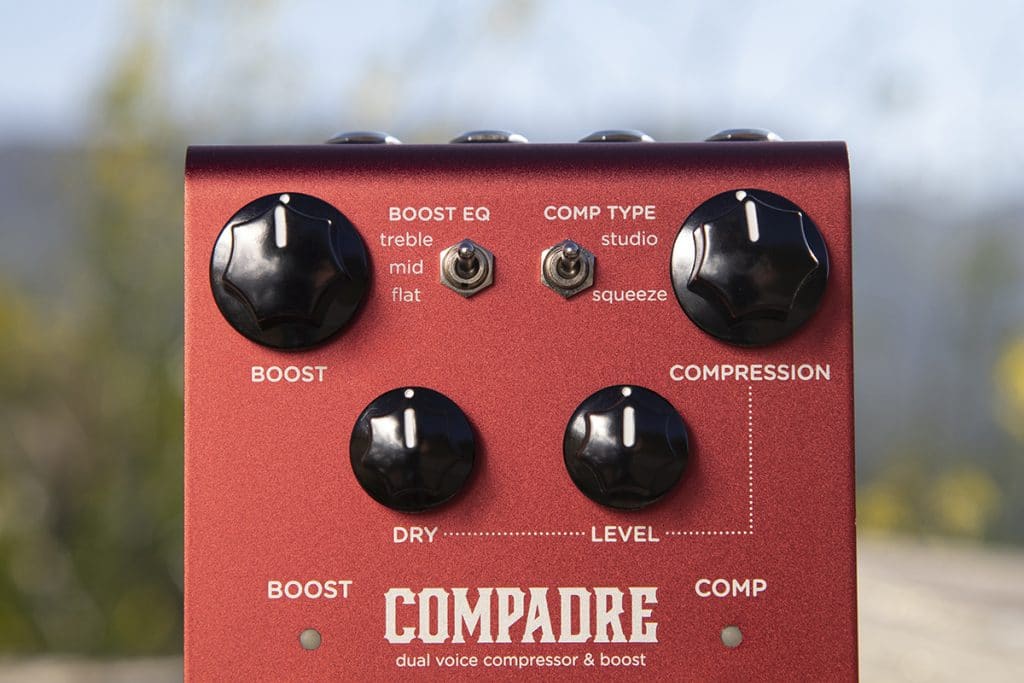
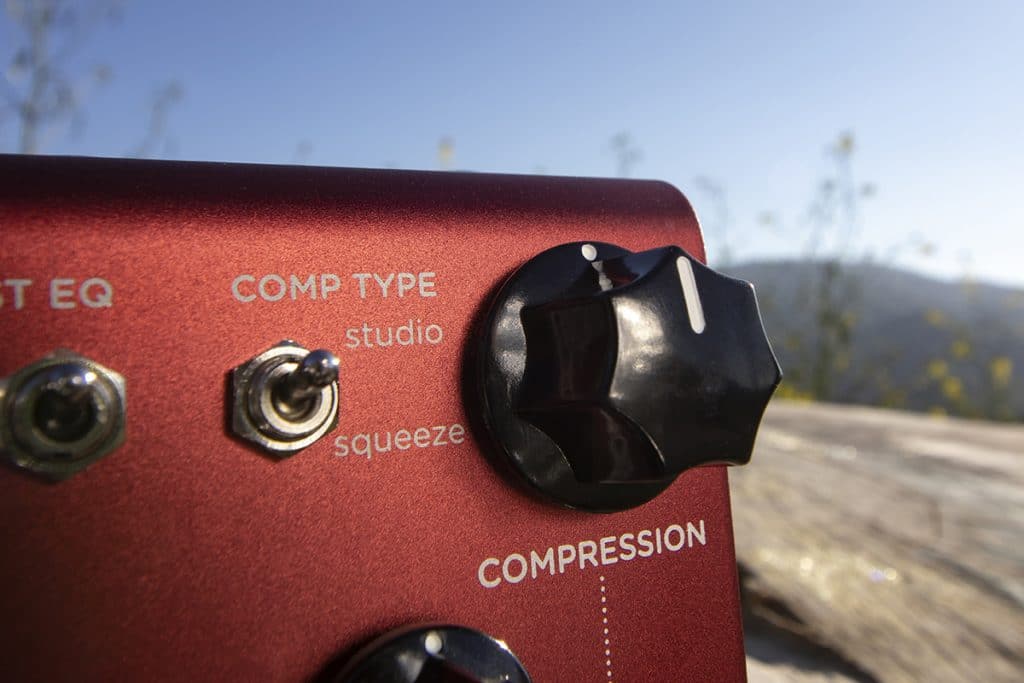
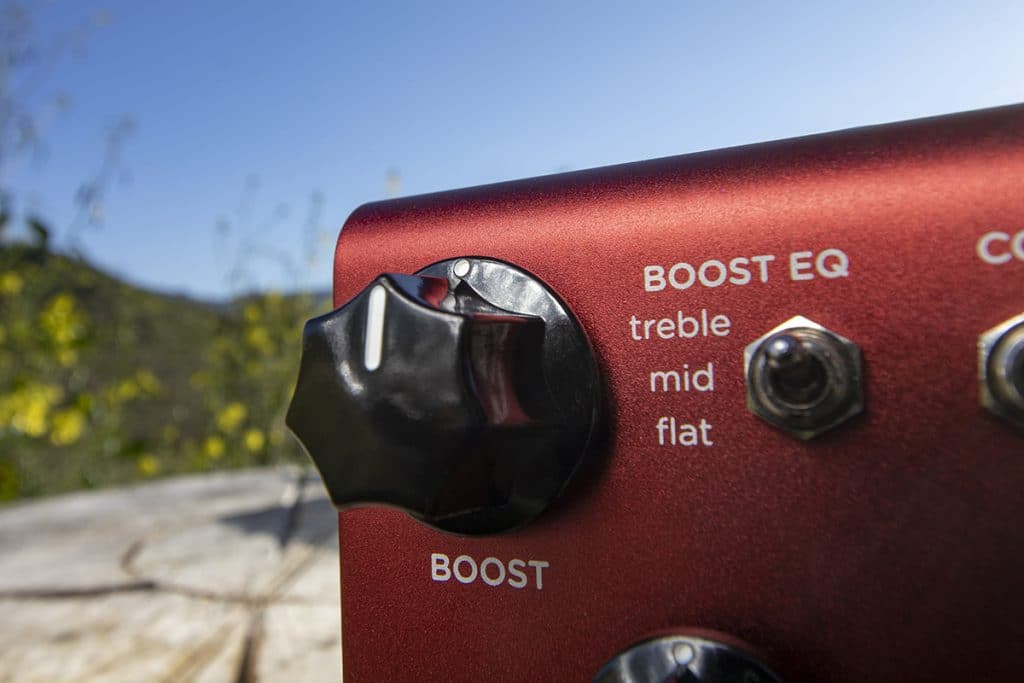
Connect an expression pedal to add premium VCA-based volume control. Add an optional MiniSwitch or MultiSwitch Plus to store and recall your favorite settings. Integrate Compadre into a MIDI pedalboard using our MIDI EXP Cable and access up to 300 preset locations.
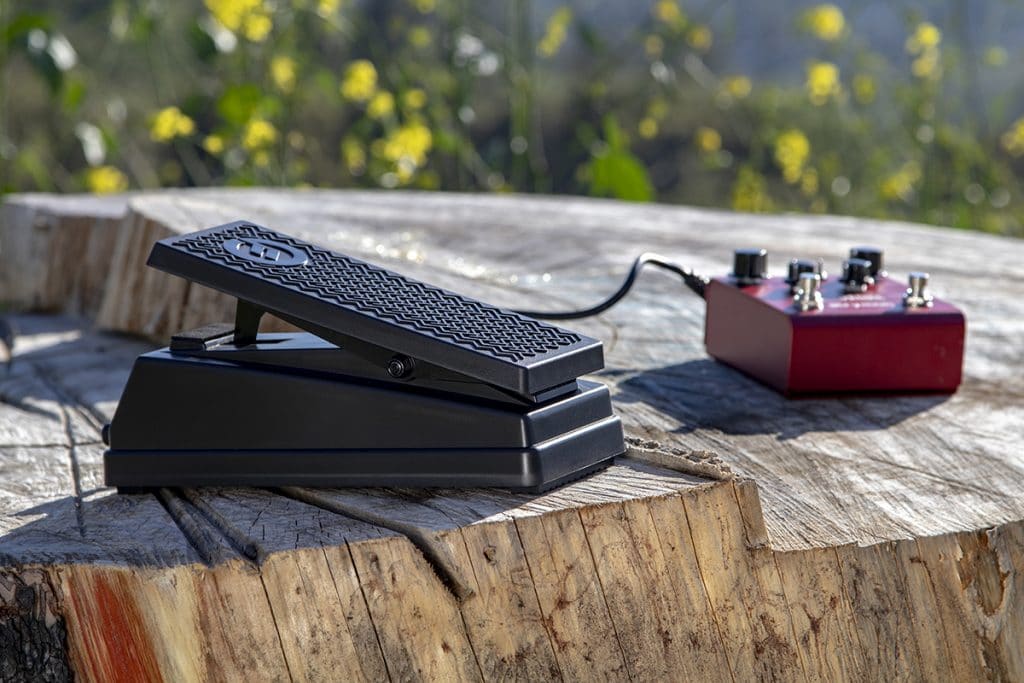
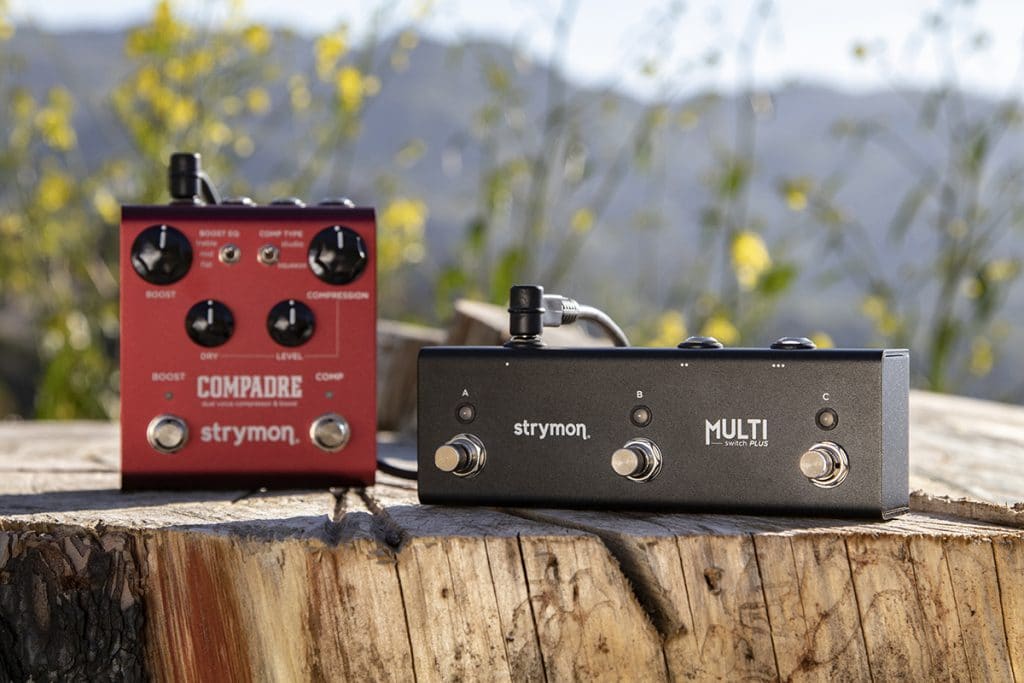

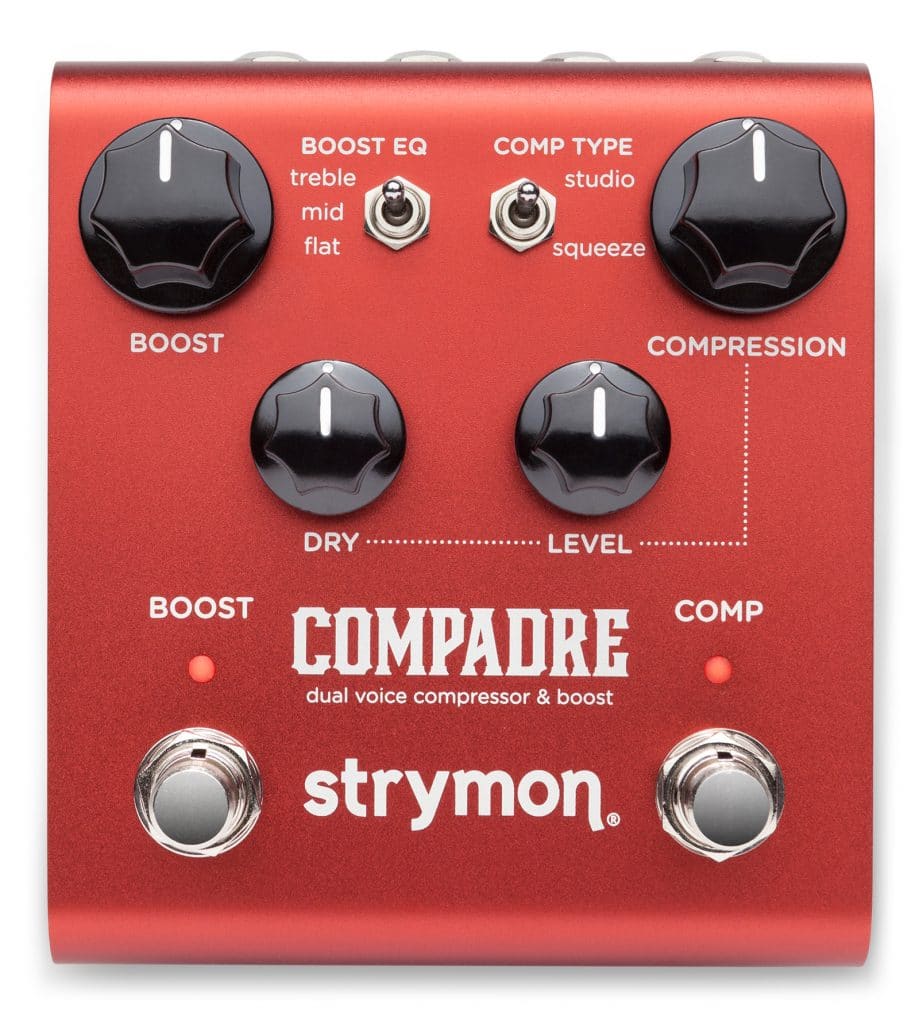
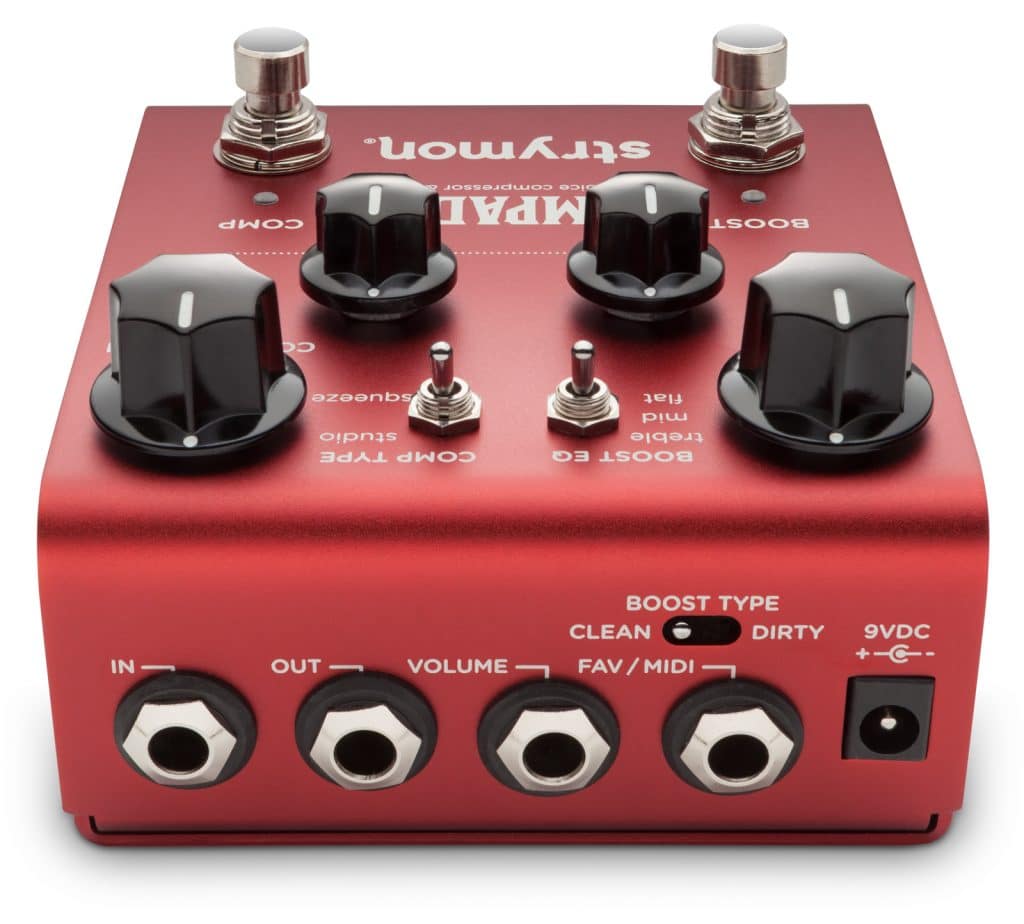
What is Compadre Dual Compressor & Boost?
In-depth tour by Strymon sound designer, DSP engineer Pete Celi
The Compadre design project started with a study of some of the finest analog compressors ever created, inspiring and guiding our circuit design process. Utilizing a VCA in the compression circuits allowed us to carefully tune the exact response and dynamics we desired for each voicing.
For Studio mode, our goal was to achieve the musical and transparent sound found within our favorite studio rack units and the best vintage studio console bus compression. Careful tuning of our detection circuit granted us exacting control over decay, especially important for Squeeze mode. With ample sustain on tap, we paid special attention to creating a completely smooth decay, with no unwanted pumping artifacts.
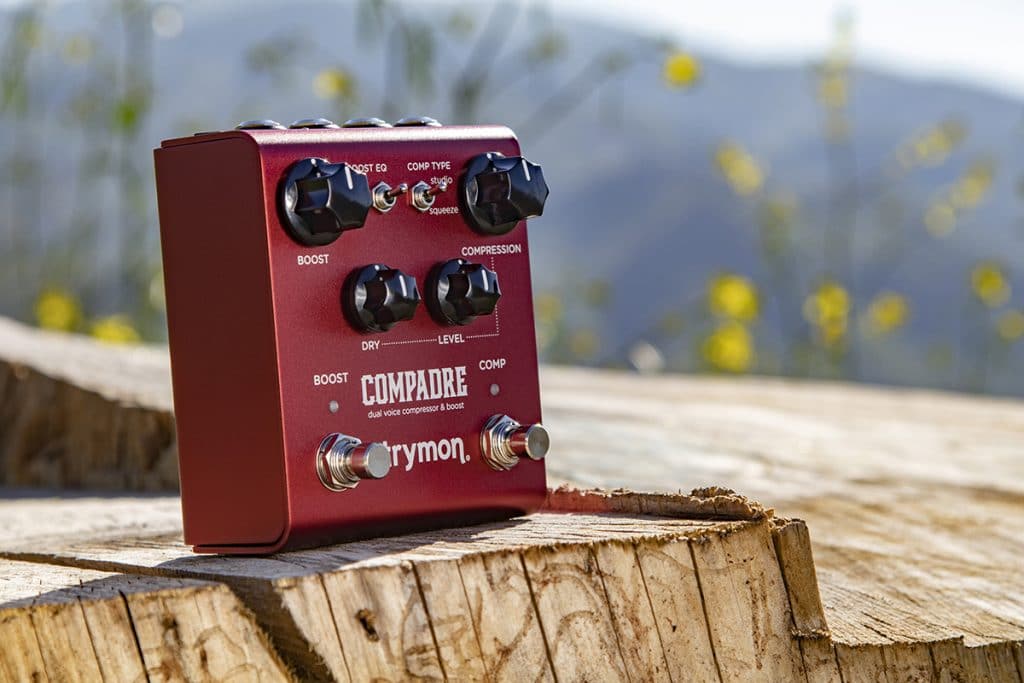
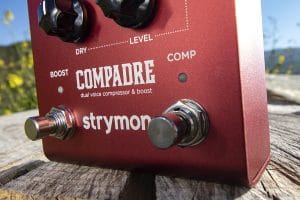
For maximum versatility, Compadre allows you to use its Boost and Compression either together or independently from one another.
In this way Compadre is truly two pedals in one. Put that together with the ability to store and recall presets using MultiSwitch Plus or MIDI, and the possibilities are limitless.
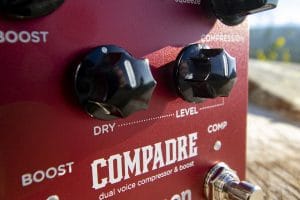
Compadre’s Dry knob allows you to add the desired amount of dry signal back into your tone, in parallel with your compressed signal.
This way, even with the most extreme compression settings, you can preserve your natural uncompressed attack and add air back into even the most squashed signal.

Compadre features a dedicated VCA for its Level control and volume pedal input.
Just connect any TRS expression pedal and you’ve got a premium VCA-based volume pedal.
No chance for scratchy pots, impedance issues, or tone suck that can affect some other volume pedals.
Compadre really does give you everything you need for the front end of your signal chain.
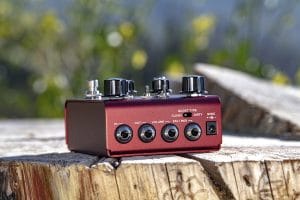 Compadre features a premium Class A JFET Input Circuit that delivers exceptional touch sensitivity and dynamic interaction with your guitar or bass, while maximizing headroom and allowing the pedal to achieve a low noise floor.
Compadre features a premium Class A JFET Input Circuit that delivers exceptional touch sensitivity and dynamic interaction with your guitar or bass, while maximizing headroom and allowing the pedal to achieve a low noise floor.
Compadre’s frequency response goes all the way down to 20Hz with no high pass roll off (unless Treble or Mid boost EQ curves are used).
This means that floor shaking low notes from a bass can shine through just as strongly as soaring leads or tight rhythms from a guitar.
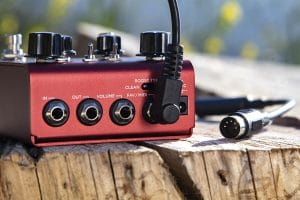
Integrate Compadre into an elaborate MIDI pedalboard or use it in an ultra-compact setup for easy travel.
Via MIDI, Compadre can store and recall up to 300 presets.
Connect our MIDI EXP Cable to the FAV/MIDI jack to access these features.

Compadre allows you to save and recall your favorite settings.
Just connect an optional MiniSwitch or other external latching footswitch with a TRS cable to store and recall your Favorite setting.
Or use MultiSwitch Plus to store and recall up to three Favorites.
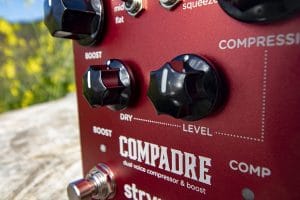
Compadre features auto threshold and auto makeup gain to make setting the compressor quick and easy.
If you need to fine tune Compadre’s output level when compression is engaged, the Level knob can be used to adjust the output level of the compressor by -6dB to +6dB, with unity gain at noon.
From the Class A JFET input circuit, to the VCA-based compression, to the Clean Boost and the diode soft clipping Dirty Boost, every aspect of Compadre’s audio signal processing is fully analog, with premium quality components, design, and workmanship throughout. The audio signal is never converted to or from digital.
In Compadre, the digital aspect comes in the form of digital control and programmability. By converting digital control messages to analog control voltages, we can offer full MIDI control and recallable presets while preserving a completely analog signal path from end to end.

“The characteristics of the Compadre’s Studio Mode compression voice offers silky smooth, transparent compression more akin to something you would find in a vintage studio rack compressor. In Squeeze mode, the pedal reveals its classic stompbox compressor qualities – providing heavy-and-hard compression with maximum sustain.” — Guitar.com
“Both the boost and compression sections mesh together extremely well. Together, they create a front-end that brings the very best out of your amp.” — Guitarist
“It balances classic compression formulas without paralyzing you with a wealth of options. And with the impressively versatile boost circuit along for the ride, Compadre is an impressive partner indeed.” — Premier Guitar
“With a clever, intuitive design, the Compadre makes an ideal one-box solution for adding some secret sauce to your tone and bring out the best in your amplifier. Meet your new always-on stompbox.” — MusicRadar
“…utterly adept at that “didn’t know I couldn’t live without it until I turned it off” thing, providing a distinct and appealing enlivening of the overall sound that can be easy to underappreciate until you throw the proverbial blanket back over the amp by switching it off.” — Guitar Player